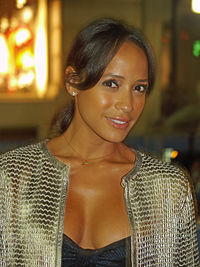A few students submitted questions via email about the Dominican Republic, here are their questions and what I could find regarding them!
What did freedom mean for former slaves in the Dominican Republic?
Just as in many Caribbean societies emancipation did not mean automatic freedom for former slaves in the Dominican Republic. Slaves continued to be controlled by plantation owners after they had gained their freedom because they could not afford financially to leave. Boham Richardson explained freedom for former slaves in the Caribbean by stating “ Caribbean planters attempted to control members of the newly free working classes by restricting their access to local lands, enacting immobilizing vagrancy laws, and importing thousands of laborers into the region in order to drive wages down”. This means that even though slavery was no longer legal in the Dominican Republic African Americans had few options when looking for forms of employment, often times binding them to their former masters. These limits on civil rights and economic restraints on blacks were often referred to as “unfreedom” because essentially little progress had been made in the first years of emancipation on the island. Former slaves despite the revolution often experienced little changes in their quality of day-to-day life. When they were still employed by former masters they were still subject to abuse and horrible working conditions. However despite this “unfreedom” experienced by freed slaves in the Dominican Republic more rights were given to them in the form of relationships. No longer could owners put harsh, unjust restrictions on African Americans living together or starting families with one another. Occasionally when slaves were not financially bound to their original masters their first in the Dominican their first role express their newly gained freedom would be to relocate to Haiti to look for employment. This migration was looked at as a fresh start for Dominicans and a way to better themselves.
What similarities and differences occurred between the experiences of free women and free men the same?
Little is noted about the different experiences between free women and free men in the Dominican Republic. Both males and females had gone through extreme oppression during the years of slavery and had similar choices during the “unfreedom” timeframe following emancipation. It can be inferred that because so little is written about specific women or male experiences following emancipation that it was relatively similar to one another.
What kinds of systems of labor replaced slavery on your island?
Low wage work replaced slavery in the Dominican Republic. Large numbers of people from Haiti were recruited to relocate to the Dominican Republic and drive wages down for newly freed slaves with the increase in population. These Haitians were coerced into moving mainly by private companies and their stories of wealth to be had on sugar plantations. At the time both countries governments were to weak to take control of the free migrant worker system. Essentially systems of labor remained similar to slavery directly after emancipation because the wages were so minimal little advancements could be made.
Sources:
From Hidden Hand to Heavy Hand: Sugar, the State, and Migrant Labor in Haiti and the Dominican Republic
Latin American Research Review , Vol. 34, No. 1 (1999), pp. 57-84
Published by: The Latin American Studies Association
The Tribulations of Blackness: Stages in Dominican Racial Identity
Callaloo , Vol. 23, No. 3, Dominican Republic Literature and Culture (Summer, 2000), pp. 1086-1111
Published by: The Johns Hopkins University Press


